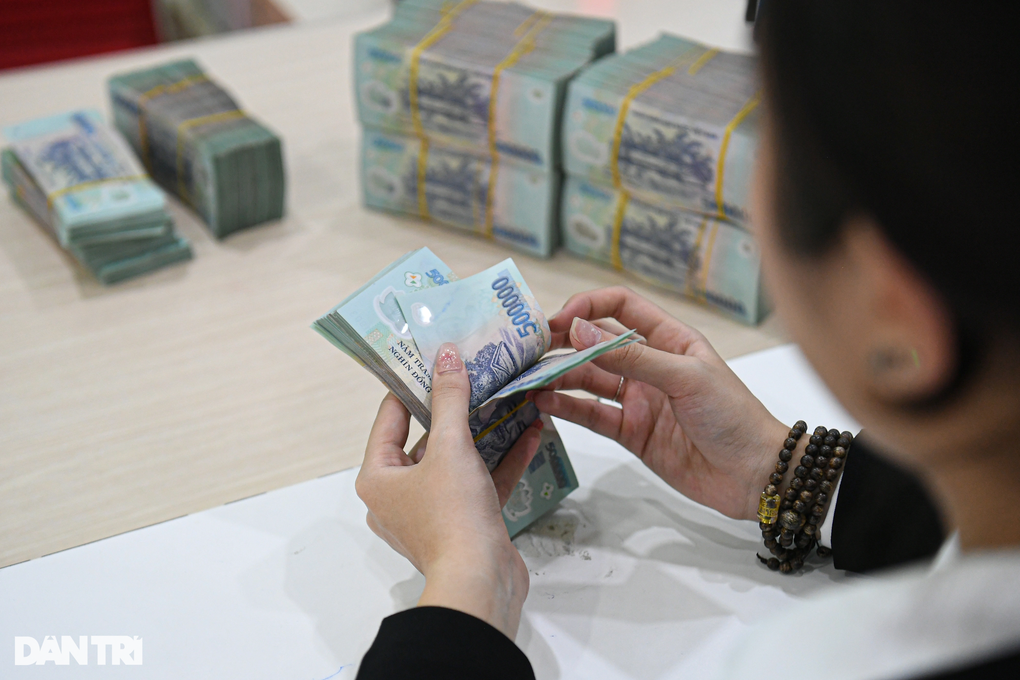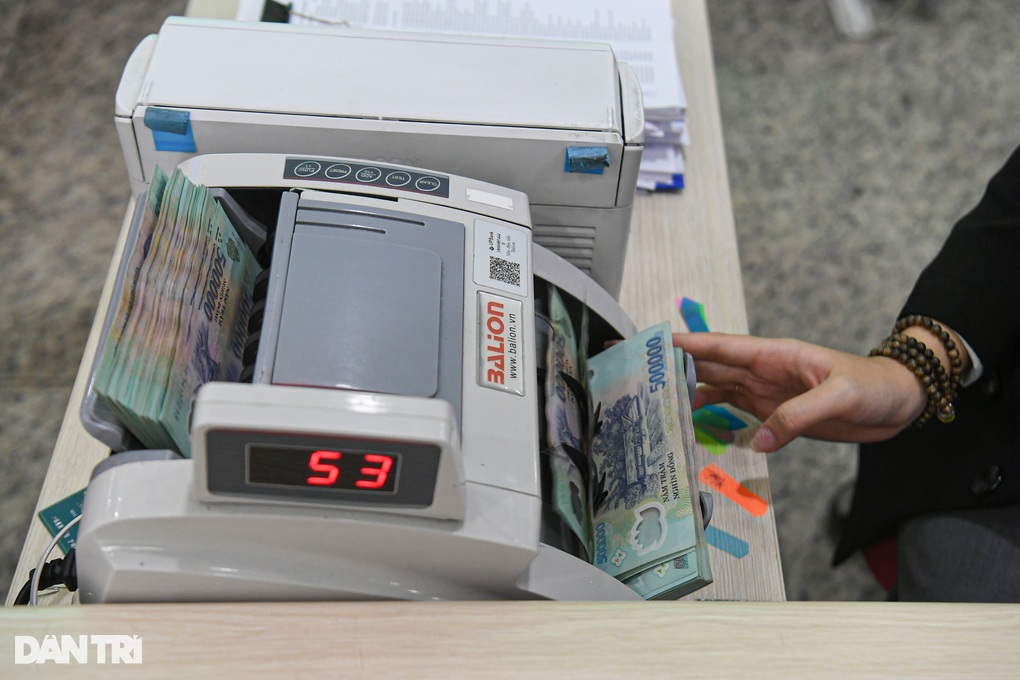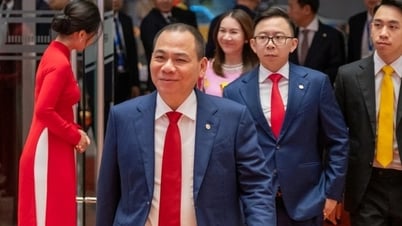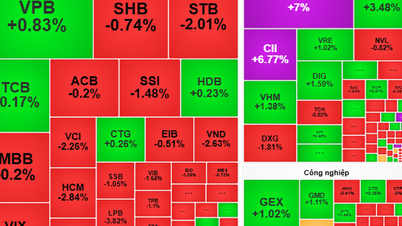29 domestic commercial banks have lowered their deposit interest rates by 0.1 to 1.05 percentage points per year following the State Bank's directive since late February, bringing the savings interest rate to the lowest level in the past year. With a 12-month deposit term, only one bank in the market offers an interest rate of 6% per year.
This move came after the Prime Minister directed the "hot" inspection of banks that have increased deposit interest rates in recent times. The Government leader also requested strict handling of violations and non-compliance with the directive. In particular, the Governor of the State Bank needs to consider and decide on the use of management tools on credit growth limits and license revocation according to regulations.
Interest rate reduction: Opportunity to support growth but need to be viewed cautiously
Speaking with Dan Tri reporter, Mr. Nguyen Quang Huy, CEO of the Faculty of Finance and Banking, Nguyen Trai University, commented that the mobilization interest rates at many commercial banks recently continued to decrease slightly.
According to this person, this is the result of the consistent policy of the Government and the State Bank in stabilizing interest rates at a reasonable level, thereby creating room to support economic growth and restore production and business after a period of prolonged difficulties.
He said that this downward adjustment is not only of technical significance, but also shows a positive signal about system liquidity, expectations of inflation control and macroeconomic stability being strengthened. However, it is necessary to recognize the fact that the reduction in deposit interest rates does not mean that loan interest rates will decrease immediately and simultaneously.
"Commercial banks still have to balance factors such as credit risk, bad debt provisioning pressure, and profit margin," he said.

Lending interest rates are expected to decrease as savings interest rates decrease (Photo: Manh Quan).
He predicted that in the last 6 months of the year, lending interest rates may maintain a slight downward trend, but will move flexibly and selectively.
The level of interest rate reduction will depend on three factors. The first is the State Bank's management policy through a reasonable reduction in capital costs to support economic recovery without sacrificing macroeconomic stability and system safety.
Second is the actual bad debt situation in the banking system and the economy's ability to absorb capital, and finally, external developments such as the US Federal Reserve's (Fed) policies, USD prices, oil prices, etc. can create unpredictable variables in the short term.
However, with the stability of the domestic macroeconomy and the remaining flexibility of monetary policy, Mr. Huy believes that the trend of lending interest rates will continue to "calm down", especially for individual customers, small and medium enterprises, and priority sectors.
According to experts, the interest rate level has entered a "relatively stable" zone, but there is still the potential for slight fluctuations in the short term. The current stability is the result of proactive and flexible management, but it is also very sensitive to external shocks or fluctuations within the financial and banking system.
Mr. Huy also stated that there is still room for monetary policy to support growth. "That is to further lower the operating interest rate if the exchange rate pressure is not high; to expand the credit room more flexibly, in the direction of prioritizing the real production sectors, social housing, small and medium enterprises...", he stated.
However, according to him, the State Bank also clearly demonstrates caution and risk control, in order to avoid repeating the negative consequences of the past when loosening too much. That is, the policy will be "loose but controlled", "open but not massive", suitable for each stage of economic recovery.
The current trend of decreasing interest rates is a positive signal.
Credit growth has begun to show positive signs and is expected to continue to improve. According to the State Bank, by the end of the first quarter, credit growth reached 3.93%, 2.5 times higher than the same period last year.
Associate Professor Dr. Nguyen Huu Huan, lecturer at Ho Chi Minh City University of Economics (UEH), commented that the decrease in credit growth in the first two months of this year was mainly due to the seasonal nature of input, the Lunar New Year holiday, and high outstanding debt in the fourth quarter of 2023. Normally, customers' capital demand will increase again from the second quarter and gradually improve in the following quarters, especially from the beginning of the fourth quarter - the peak business season.
According to him, credit is expected to gradually improve in the coming months, especially when lending interest rates are maintained at low levels.
"But in my opinion, it is highly likely that this year's credit growth will not reach the set target of 15%, but only at 10-11% due to slow economic recovery, low capital demand from corporate customers, weak market purchasing power, and businesses not being interested in using loans to expand production and business," he said.
Meanwhile, for individual customers, although the demand for home loans and consumer loans is always increasing, due to income being affected in the difficult economic context, not many people dare to think about taking out a home loan, even though interest rates have decreased.
Mr. Huan assessed that economic growth is recovering, although the level is still weak. The Government and the State Bank also asked banks to make efforts to reduce costs to reduce lending interest rates, support and share with customers in difficult circumstances. "Therefore, the possibility of monetary policy continuing to be loosened to support the economy," he commented.

Credit has started to grow positively and is expected to continue to improve (Photo: Manh Quan).
For the group of people who have a real need to buy a house to live in, Mr. Nguyen Quang Huy assessed that the current trend of decreasing interest rates is a positive signal. Commercial banks are launching many credit packages with preferential interest rates lasting 12-24 months, and the floating interest rates will also be "softer" than in the 2023 period.
However, this person believes that we should not expect interest rates to continue to decrease deeply or remain at a long-term low level, because external fluctuations (exchange rates, commodity prices, global policies) can still cause the interest rate cycle to turn around in the 2026-2027 period.
For those who need to borrow to buy a house, he advises to borrow within their actual financial capacity, not to borrow to "chase the dream of owning real estate" if the cash flow is not stable. The maximum loan ratio, according to his advice, is only 50% of the apartment value to ensure financial balance.
In addition, borrowers need to choose a loan package with a long preferential period, clear post-preferential interest rates, and avoid "hidden" terms.
"In addition, we should take advantage of the current time to negotiate better terms on principal grace period and early repayment fees, because banks are proactively promoting credit growth," Mr. Huy said.
Source: https://dantri.com.vn/kinh-doanh/lai-suat-huy-dong-giam-lien-tuc-lai-cho-vay-sap-toi-ra-sao-20250519140035829.htm



![[Photo] General Secretary To Lam attends the conference to review 10 years of implementing Directive No. 05 of the Politburo and evaluate the results of implementing Regulation No. 09 of the Central Public Security Party Committee.](https://vphoto.vietnam.vn/thumb/1200x675/vietnam/resource/IMAGE/2025/5/19/2f44458c655a4403acd7929dbbfa5039)
![[Photo] Panorama of the Opening Ceremony of the 43rd Nhan Dan Newspaper National Table Tennis Championship](https://vphoto.vietnam.vn/thumb/1200x675/vietnam/resource/IMAGE/2025/5/19/5e22950340b941309280448198bcf1d9)
![[Photo] President Luong Cuong presents the 40-year Party membership badge to Chief of the Office of the President Le Khanh Hai](https://vphoto.vietnam.vn/thumb/1200x675/vietnam/resource/IMAGE/2025/5/19/a22bc55dd7bf4a2ab7e3958d32282c15)

![[Photo] Close-up of Tang Long Bridge, Thu Duc City after repairing rutting](https://vphoto.vietnam.vn/thumb/1200x675/vietnam/resource/IMAGE/2025/5/19/086736d9d11f43198f5bd8d78df9bd41)


















![[Photo] Prime Minister Pham Minh Chinh inspects the progress of the National Exhibition and Fair Center project](https://vphoto.vietnam.vn/thumb/1200x675/vietnam/resource/IMAGE/2025/5/19/35189ac8807140d897ad2b7d2583fbae)





























































![[VIDEO] - Enhancing the value of Quang Nam OCOP products through trade connections](https://vphoto.vietnam.vn/thumb/402x226/vietnam/resource/IMAGE/2025/5/17/5be5b5fff1f14914986fad159097a677)





Comment (0)